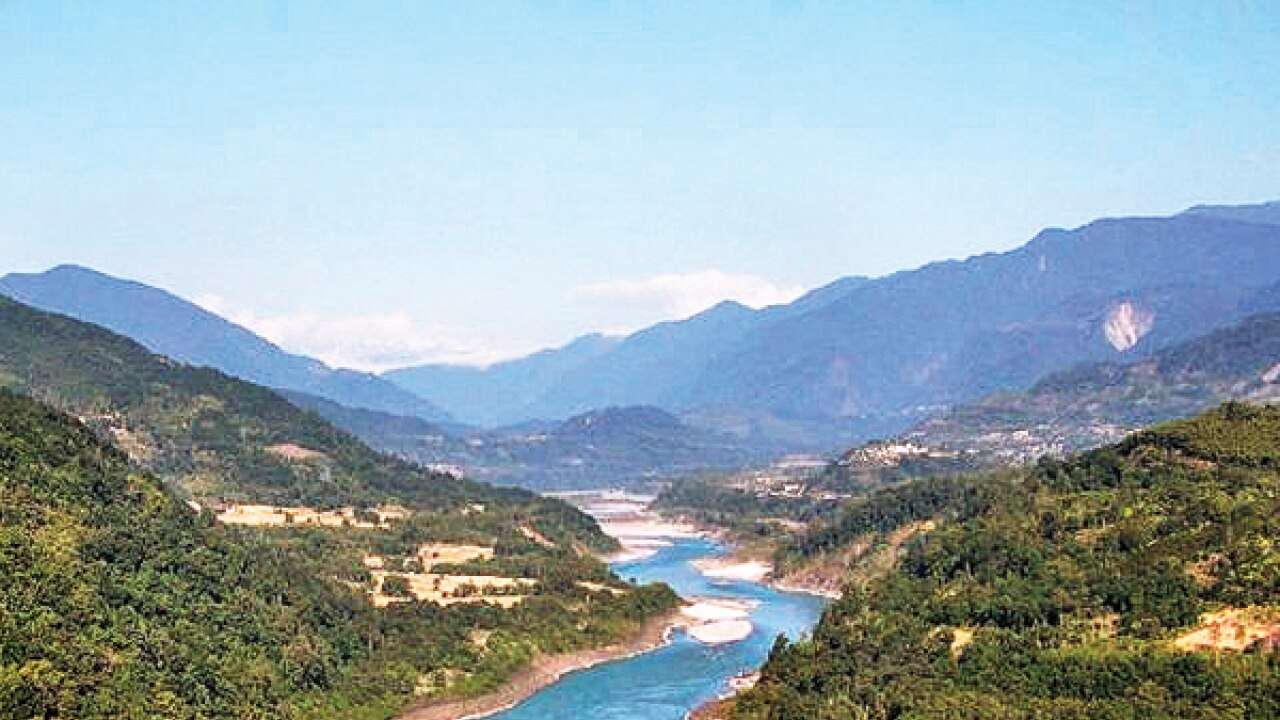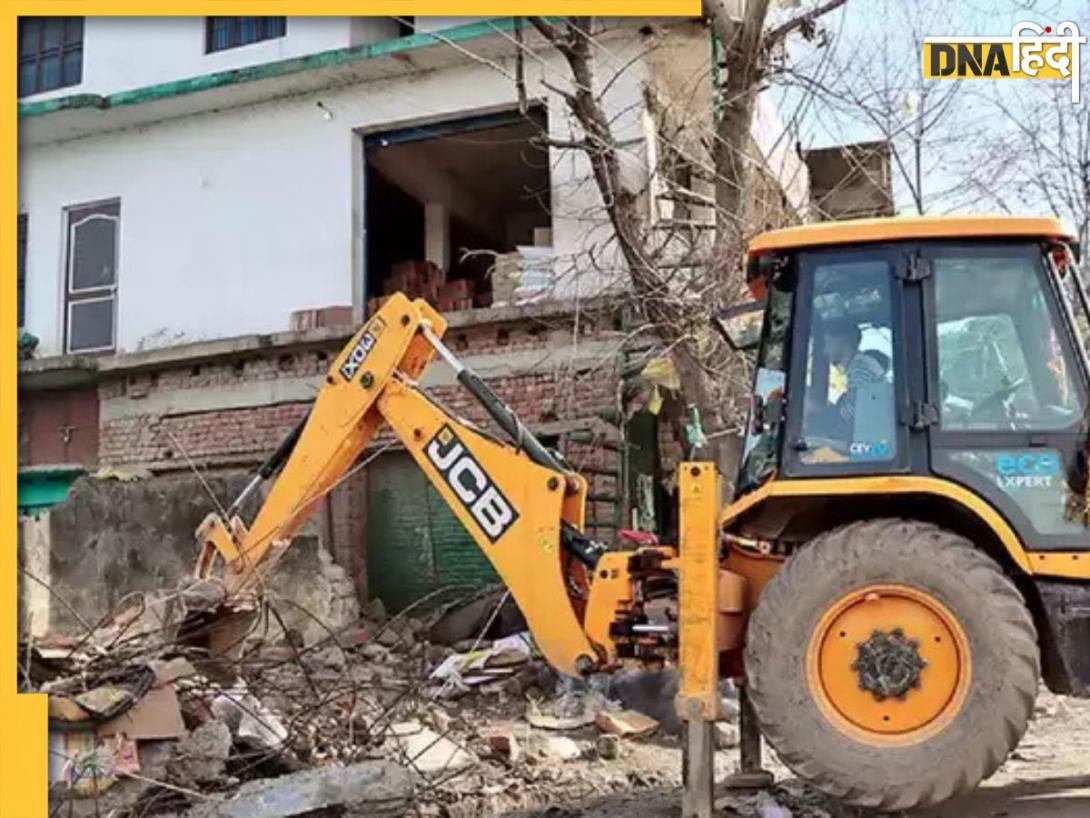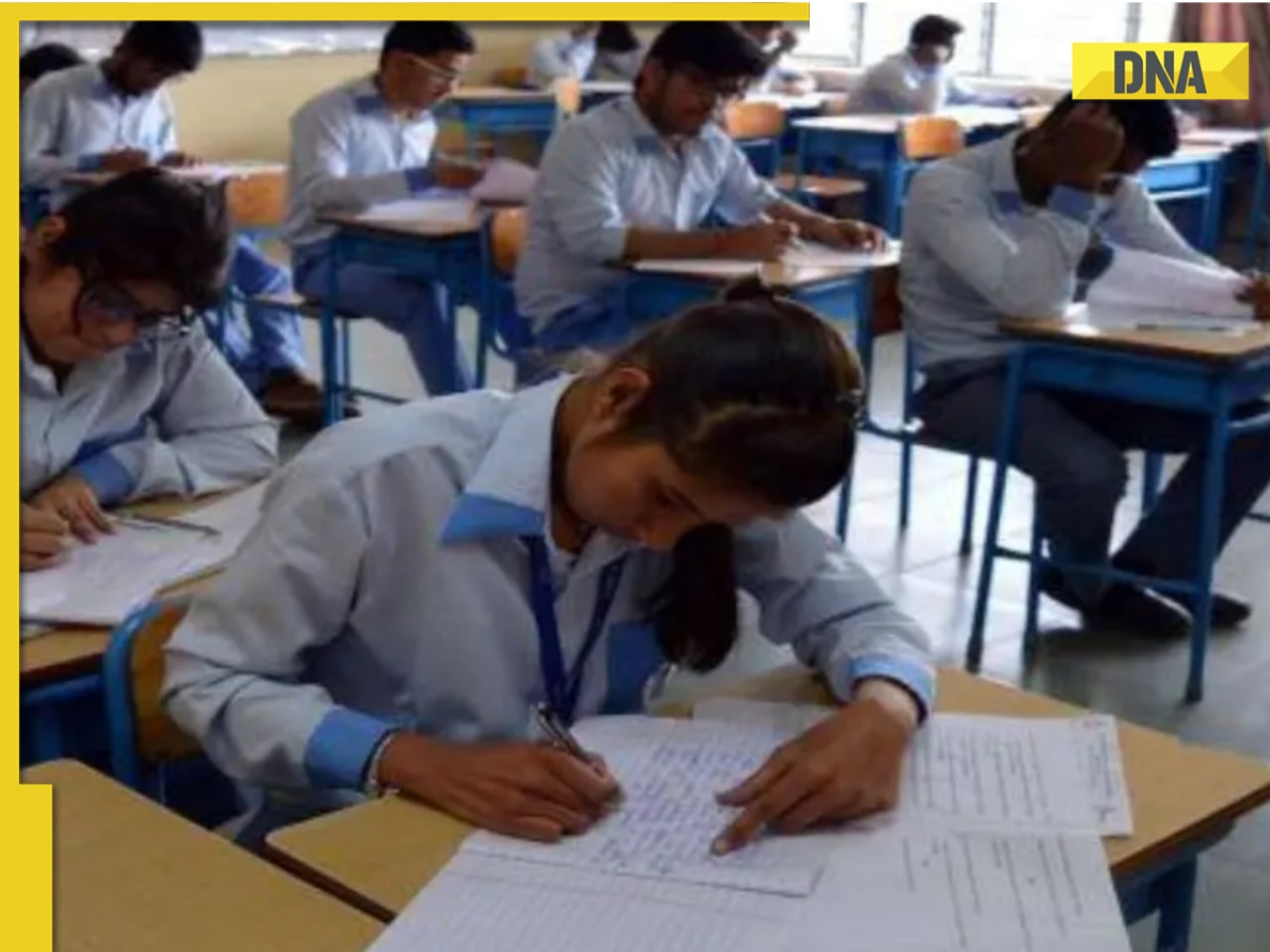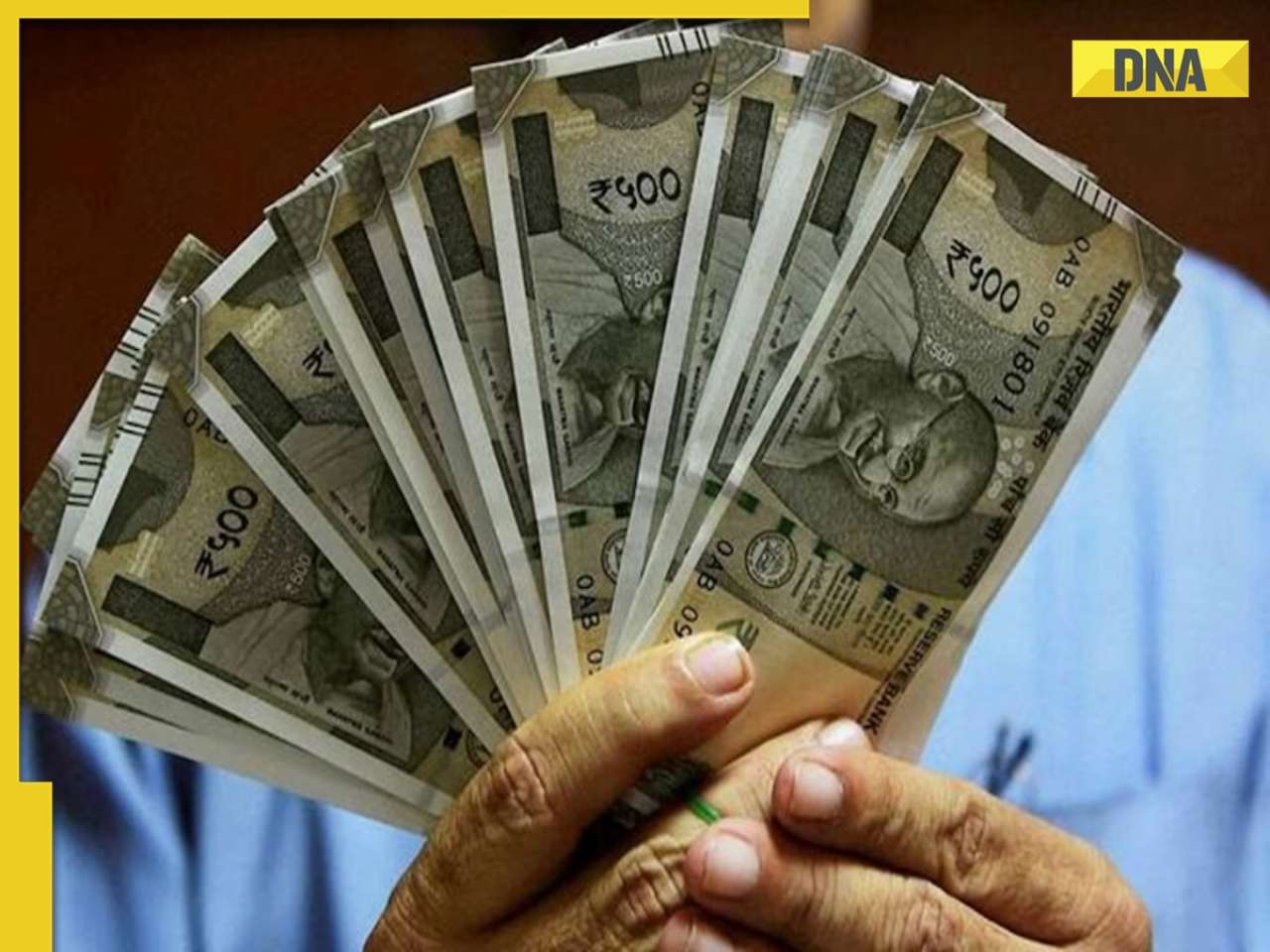- LATEST
- WEBSTORY
- TRENDING
INDIA
DNA Explainer: How China is conspiring to use Brahmaputra river as weapon against India
The fact that China has come up with 3 hydropower projects in close proximity to each other, within the span of 24 kilometres, is a matter of concern.
TRENDING NOW
The Chinese government led by Xi Jinping is known to use every dirty trick in the book to advance Jinping’s expansionist and authoritarian ambitions. From intellectual property and technology theft to coercing the developing and low-income countries into a vicious debt trap, the Chinese Communist Party (CCP) has rigorously been using unscrupulous means to gain a strategic advantage. Having control over cross-boundary rivers are also such potential tools or weapons that are being strategized by Xi's administration to achieve the strategic goals of China.
The fact that China has come up with three large hydropower projects in very close proximity to each other, within the span of 24 kilometres, is a matter of immediate concern. These three dams are - the Zangmo dam, which is already in commission; the Gyatsa dam, which has been constructed and is waiting to be commissioned; and finally, the Dagu dam, which has been in construction since 2017 and is the largest of the three.
“All the three dams have provisions for reservoirs with a combined capacity of almost a billion cubic meters of water. Despite the fact that there is only one village comprising 150 households close to these dams, China decided to undertake such large and costly projects. This has prompted speculation that Beijing's prime aim behind the projects is to control the flow of the river, besides exporting electricity from Tibet to mainland China. Tibet, with all the rivers that flow through it, can generate 200 million kWh of power, accounting for 30 per cent of the gross hydro-power production of China.” a source aware of these developments told Zee News.
The prospect of having control over the flow of the river Brahmaputra by China is a matter of concern not only for India but also for other downstream nations such as Bangladesh. China has also constructed dams on the Nyang river — a tributary of the Brahmaputra river. These three dams are-Pagsum, Langsai, and Nyang. While these dams are smaller in size, they are still able to hold a considerable amount of water. Also, there are 11 other hydropower projects on the upper reaches of the Brahmaputra. Moreover, China has already planned for several other dams on the Brahmaputra in the coming ten years at Bayu, Jiexi, Langta, Dakpa, Nang, Demo and Namcha.
The recent plan for building a major hydropower project plant on the lower reaches of the Brahmaputra has been put forth in the 14" Five-year plan (2021-2025) of CCP. The extent of importance China has attached to the project is evident from the statement of the Chairman of the Power Construction Corp. of China, Yan Zhiyong. On the 40" founding anniversary (November 26), Yan stated that the proposed project could be a historic opportunity and could serve to maintain water resources and China's ‘national security’
There are many reasons why a mega hydropower project so close to the border is a security concern for India. It is feared that after China completes the dam on the lower reaches of the Brahmaputra river in Tibet, it will gain full control of the flow of the river that is the lifeblood of millions of Indians. If at any point, China decides to cut off the water supply, even for a few days, it could prove disastrous for India. Fears reign that amid a conflict or a border dispute, China may decide to stop the flow of the river as a means of retaliation to make India submit to China's demands.
“ Satellite images have shown that besides building several military structures in the Galwan Valley, China has also attempted to barricade the Galwan river so that it can hold and release water at will, potentially endangering bridges on the 255-km Darbuk-Shyok-Daulat Beg Oldie road. China could also withhold water in the case of severe droughts, when the water levels of the river are already low, as well as flood low lying areas in Arunachal Pradesh by releasing large amounts of water from the dams at once.” Another source told Zee News.
The river Brahmaputra and its tributaries carry more than 30 per cent of the total water resource potential of India. The residents of 22 districts in the Indian state of Assam rely on the Brahmaputra and its tributaries for their livelihood. The river is also extremely important for the transportation of people and materials. During 2013-14, the total number of people that were transported through Brahmaputra’s inland water transport system stood at 70,39,000, and the river was also used to transport 3, 56,552 metric tons of goods. These ferry services also provide employment to over 5,000 people just in the state of Assam.
625 million people live in the Brahmaputra basin, of which, 80% are farmers that need the water from the river for their crops and animals. Bangladesh gets 94% of its water from the Brahmaputra and its tributaries, totalling 2.9 billion metric tons. The high use of water sources is reflected in the agriculturally based economies that come up near the river and how important its waters are.
The newest dam which has been envisaged by China on the lower reaches of the Brahmaputra river in Tibet will also hold back the river silt, which provides essential nutrients to the soil for farming and is the reason for the fertility of the plains of Assam. Further, the Brahmaputra river system and its delta are one of the world’s most ecologically sensitive regions and China's cot lams could have disastrous ecological consequences.
Indian farmers use the waters of the Brahmaputra to grow their crops and are sometimes wholly dependent on the waters of the Brahmaputra. The Brahmaputra river sub-basin in India and Bangladesh supports the livelihood of 66 million people through subsistence agriculture. In the lower basin, due to greater precipitation, there are forests with valuable timber, reed jungle and several key agricultural products in the Assam valley including tea and fruit trees. If Beijing decides to withhold water, North-Eastern India will be deprived of nutrient-rich silt from the Brahmaputra. According to experts, with China's dam in place, even without Chinese intentions, Assam might get 64% less water during the monsoon season and 85% less water in the rest of the year.
In 2016, China has announced that it had decided to block the Xiabuqu river, which is one of the many tributaries of the Brahmaputra on the Chinese side. As per reports, China also has plans to build a dam at Xigase as a part of the Lalho hydroelectric project in the Tibet Autonomous Region. Zhang Yunbao, head of the project's administration bureau stated that the Lalho project in Tibet represented an investment of $740 million and upon completion will be able to store close to 300 million cubic meters of water, which would be used for ‘irrigation’. However, one can easily speculate on the real intentions of China.
China's continued construction activities in the Himalayas pose an ecological risk as well. Seismologists consider the region to be highly vulnerable to earthquakes and seismic activities. The sheer size of the projects being undertaken by China poses a grave environmental risk to the millions of people and several other species living downstream. The Brahmaputra basin is one of the world's most ecologically sensitive zones. This region is home to several species of flora and fauna that are unique to this part of the world. The Kaziranga National Park houses 15 mammalian species that are listed as threatened in the IUCN conservation list. While the river itself is home to the Gangetic river dolphin that is considered critically endangered.
This is a well-known fact that when nature retaliates to human activities that disturb the environment and ecological order, it comes in the form of mass destruction. The 2015 Nepal earthquake in the region and the resulting landslides wiped out several dams and other structures in the region. Recently, a Himalayan glacier fell into a river, triggering a huge flood in the Indian state of Uttarakhand. Early June 2020 also saw floods severely devastating Bangladesh. A quarter of the country was inundated by the floods. Almost a million homes were flooded and more than 1,500 square kilometres of farmland was damaged.
According to a study titled “Biodiversity decline of fish assemblages after the impoundment of the Three Gorges Dam in the Yangtze River in, China” the Three Gorges Dam (TGD) has had a negative impact on fish biodiversity and has caused habitat loss and environmental changes brought about by the TGD has disrupted the natural seasonal flow patterns used by fish and blocked or destroyed their breeding grounds. A completely different study title “Unraveling the effects of large-scale ecological programs on ecological rehabilitation of China’s Three Gorges Dam” published in 2020, uncovered major ecological issues caused by the TGD such as degradation of terrestrial ecosystems in the reservoir area, water quality, aquatic biodiversity and riverbank erosion.
Construction activities undertaken in close proximity of rivers, especially in mountainous areas, cause an increase in suspended particles (rocks, sands etc.) in the river. In 2017, the clear waters of the Siang river had suddenly become extremely muddy. The Siang river originates in the Tibetan plateau and flows into Arunachal Pradesh, where it joins the Lohit and the Dibang downstream to form the mighty Brahmaputra in Assam.
Results from testing of the water had shown a much higher level of turbidity in the water. The turbidity is the measure of the concentration of suspended or dissolved particles in the water. The turbidity of the Siang river was measured at above 400 Nephelometric Turbidity Unit (NTU) against the standard 12-15 NTU. Even during monsoons, when the turbidity of a river goes down, the Siang river has 290-310 NTU of turbidity. The high turbidity level of the river greatly affects the life of fishes as the presence of suspended particles leads to choking of gills resulting in mass deaths. Results also showed a higher concentration of iron in the water at 40 parts per million (PPM) as against the standards of 0.2 PPM.

According to Professor Dr Sriparna Pathak, China has also started using polymer resin adhesives during its major construction activities. The resin adhesives are commonly used during large construction activities but are never used in close proximity to water bodies because they are harmful to humans and animals. Till now China has denied all such reports of it planning to build tunnels.
Rajya Sabha member from Assam, Ripun Bora who highlighted the darkening of the river waters in the Indian Parliament stated that the waters of the river had turned poisonous and had led to the death of many animals and aquatic life. MP Bora also went on to add that that the cause for the sudden change in the river was due to the continued construction activities undertaken by China upstream. The increase in the turbidity of the river was greatly affecting the availability of drinking water supply as well as the livelihood of fishermen and farmers that rely on the clean waters of the Brahmaputra.
What has also been extremely concerning news are reports detailing how China may divert the waters of the Brahmaputra by using tunnels connected to the reservoirs constructed under their hydropower projects. China’s water diversion plan was revealed after news broke on another Chinese dam construction-13 kilometres upstream from the Tsangmo dam. The finding suggested that the main purpose of this structure was to divert the water from the river and not hydropower generation. According to media reports, China plans to divert the waters of the Brahmaputra almost 1,100 kilometres away from its original path.
Dr Dhansree Jayaram, a professor at the Manipal Academy of Higher Education stated during a recent webinar, organised by Red Lantern Analytica, that China has already undertaken water diversion projects on domestic rivers and it is a very real possibility that they will attempt to do so with trans-boundary rivers as well.
The rationality of the water diversion plans on China’s part may be understood through shortages of drinking water in the Southern and Eastern regions of China due to prolonged droughts. China's Ministry of Water revealed on February 4, 2021 that 500,000 hectares of arable land had been affected by the drought and over 300,000 people in rural areas were without a sufficient supply of potable water. The Ministry of Water also added that the region south of the Yangtze River had received 50-80 per cent less water from rainfall since October 2020 and that over 2 million people in Zhejiang, Guangdong and Fujian provinces had been affected. This tunnel diverting water from the Brahmaputra may provide a solution to its growing problems. However, diverting river routes, especially through its youthful stage, can have devastating effects on downstream nations like India and Bangladesh, as well as on the river dependent flora and fauna - the negative impacts that China seems to be deliberately ignoring.
Though China had, in principle, agreed to provide water flow data of Brahmaputra to India so that the Indian government may aptly prepare in advance if the water level were to rise or fall, it has been untruthful to its word. The two countries have even signed an MoU in 2013 regarding the sharing of water flow data. However, unlike the Indus Water Treaty that India has with Pakistan in terms of water sharing of the Indus river, there are no binding agreements between India and China on Brahmaputra water sharing. China seems to be exploiting the gestation period, before any binding agreement on the Brahmaputra, to ensure its permanent leverage against India. Apart from India, Bangladesh, which is wholly dependent on the Brahmaputra River is concerned with the increasing number of dams that China is building on the Brahmaputra.
China’s actions in the last few years have shown its neighbours and the international community that it will go to extreme lengths to secure a strategic advantage even at a cost of environment and ecological disruptions. This latest dam project gives the power to China to hold hostage the river and its life-giving waters. As many as 100 million people rely on the Brahmaputra in the region besides numerous aquatic species. The impacts of climate change are already visible in this region and rising temperatures result in the glaciers and snowlines retreating, increasing the possibility of flash floods. China's indifference towards the ecological ill effects of such massive projects should immediately be taken note of by the international community. In view of these, a strong bilateral treaty with China on Brahmaputra water sharing is necessary and India must pressurize China to enter into a dialogue and establish a treaty that will regulate the amount of water to be released, preservation of the quality of the water and the aquatic life as well as water-sharing during times of droughts and abnormal weather. If necessary, the international community should also be involved.







)
)
)
)
)
)
)
)
)
)
)
)
)
)
)
)






























































